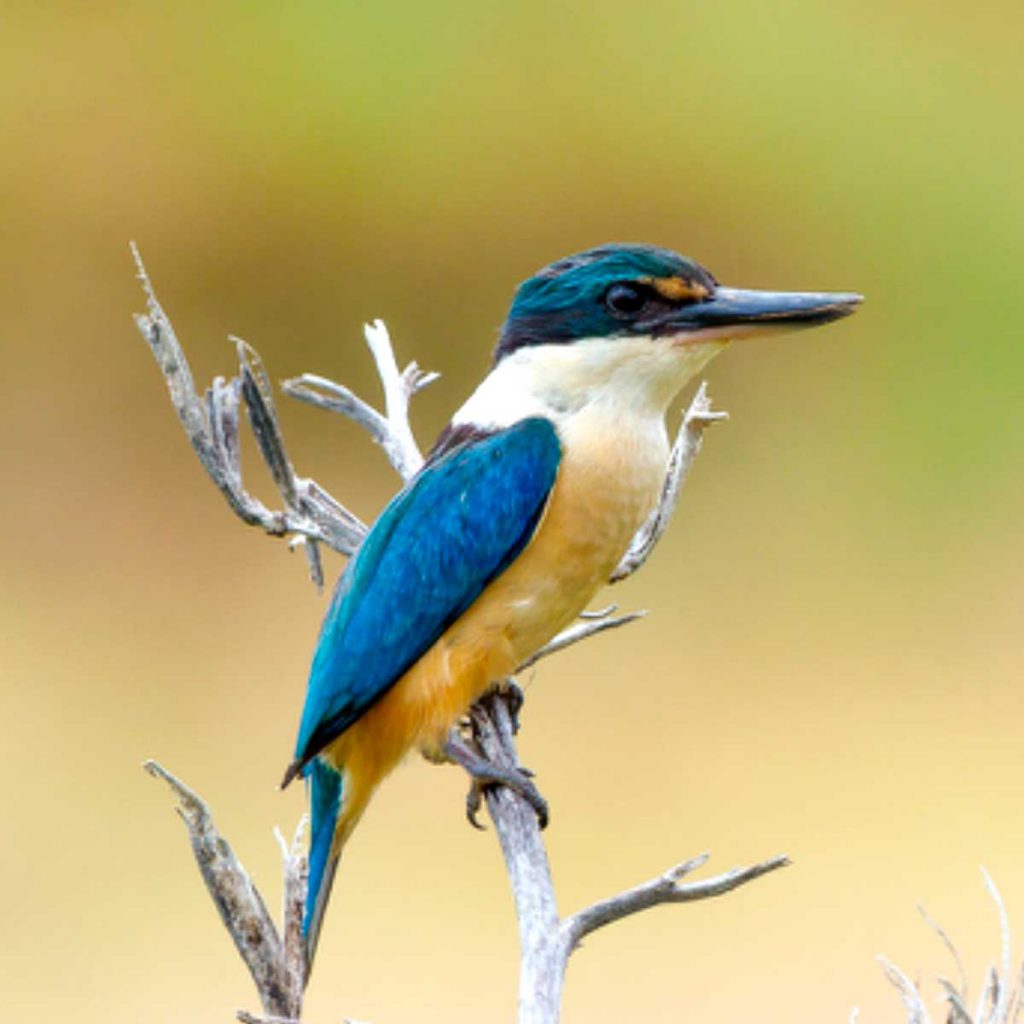
Birds / Kingfisher
Information for Juniors
Sacred Kingfisher – Kotare
(Todiramphus Sanctus)
- Maori name is Kotare
- These birds are common throughout the NZ coastland, woodland and forest
- Polynesians call Kingfishers ‘Sacred’ believing it controls the ocean
- Turquoise in colour with white/gold underparts make it most striking
- Feeds on insects, small crustaceans, fish, small rodents and reptiles
- It patiently sits on a low branch it then swoops down to grab its prey and then returns to its perch to eat much like a hawk
- Once a pair has mated they both dig the nest in a burrow in a river bank, large empty branch or similar
- The female lays about 5 eggs and both birds incubate the eggs and care for the young
What does it sound like?

Information for Junior Secondary
Sacred Kingfisher – Kotare
(Todiramphus Sanctus)
- Maori name is Kotare
- These birds are common throughout the NZ coastland, woodland and forest
- Polynesians call Kingfishers ‘Sacred’ believing it controls the ocean
- Iridescent turquoise in colour with white/gold underparts make it most striking along with its distinctive strong black beak
- Females are greener and duller in colour
- Feeds on insects, small crustaceans, fish, small rodents and reptiles
- It patiently sits on a low branch it then swoops down to grab its prey and then returns to its perch to eat much like a hawk
- Once a pair has mated they both dig the nest in a burrow in a river bank, large empty branch or similar. Which they inhabit for many years
- The mating season is around September / October
- The female lays about 5 eggs and both birds incubate the eggs and care for the young
- They are very protective of their young
- Chicks are fed on the same food as the adults, insects, spiders and fish for about 10 days after hatching then they have to fend for themselves
- Its predators are mainly cats
- Flying into panes of glass is a real hazard
- Considered a pest for eating goldfish from the pond and catching bees
- Its call is unmusical and staccato. It can go for hours marking out its territory
What does it sound like?

Information for Senior Secondary
Sacred Kingfisher – Kotare
(Todiramphus Sanctus)
- Maori name is Kotare
- Order is Coracliformes, family Halcyonidae.
- These birds are common throughout the NZ coastland, woodland and forest
- Polynesians call Kingfishers ‘Sacred’ believing it controls the ocean
- Iridescent turquoise in colour with white/gold underparts make it most striking along with its distinctive strong black beak
- Females are greener and duller in colour
- Rarely are kingfishers found on the ground rather perching in a good spot to find food
- Prey is often swallowed whole and regurgitated later
- Feeds on insects, small crustaceans, fish, small rodents and reptiles
- It patiently sits on a low branch it then swoops down to grab its prey and then returns to its perch to eat much like a hawk
- Once a pair has mated they both dig the nest in a burrow in a river bank, large empty branch or similar. Which they inhabit for many years
- The mating season is around September / October
- The female lays about 5 eggs and both birds incubate the eggs and care for the young.
- They are very protective of their young
- Chicks are fed on the same food as the adults, insects, spiders and fish for about 10 days after hatching then they have to fend for themselves
- Its predators are mainly cats
- Flying into panes of glass is a real hazard
- Minors, sparrows and starlings try to steal their nests and the kingfisher become extremely aggressive often dive bombing the thief
- Kingfishers are quite solitary but breeding couples are normal
- Considered a pest for eating goldfish from the pond and catching bees
- Its call is unmusical and staccato. It can go for hours marking out its territory
What does it sound like?

